Table of Contents
Geometric patterns exist all around us, many of which can be explained through physics and mathematics. However, the recurrence of these patterns in the natural world have caused them to be viewed as symbolic representations of universal concepts. Spiritual meanings have become attached to these complex shapes and mathematical formulas. Here’s a look at popular sacred geometry patterns and what they represent.
What Is Sacred Geometry?

Geometry, literally meaning earth measurements, deals with points, lines, shapes and space. What differentiates sacred geometry from the field of mathematics is the belief that certain geometric patterns found in nature have spiritual meanings.
Throughout history, spiritual teachers and mystics have applied symbolism to these shapes and patterns. However, its interpretation and significance vary according to the culture and religion.
Some view sacred geometry as a proof of creation, which is mathematical and geometric in nature. For others, these patterns represent the architecture of the universe, as some mathematical laws and principles appear repeatedly in nature, from plants to animals, crystals and coastlines.
In Buddhism, many geometric figures and numbers have spiritual and esoteric significance. Others also imbue symbolism in specific shapes and patterns, and believe that they represent the intangible, mystical elements of life. Some also describe sacred geometry as the geometry of consciousness and believe that studying it will align their consciousness to the infinite and the eternal.
Most Popular Sacred Geometry Symbols
There are several shapes and patterns that are believed to have spiritual meanings. Here are some of them:
1. The Metatron Cube
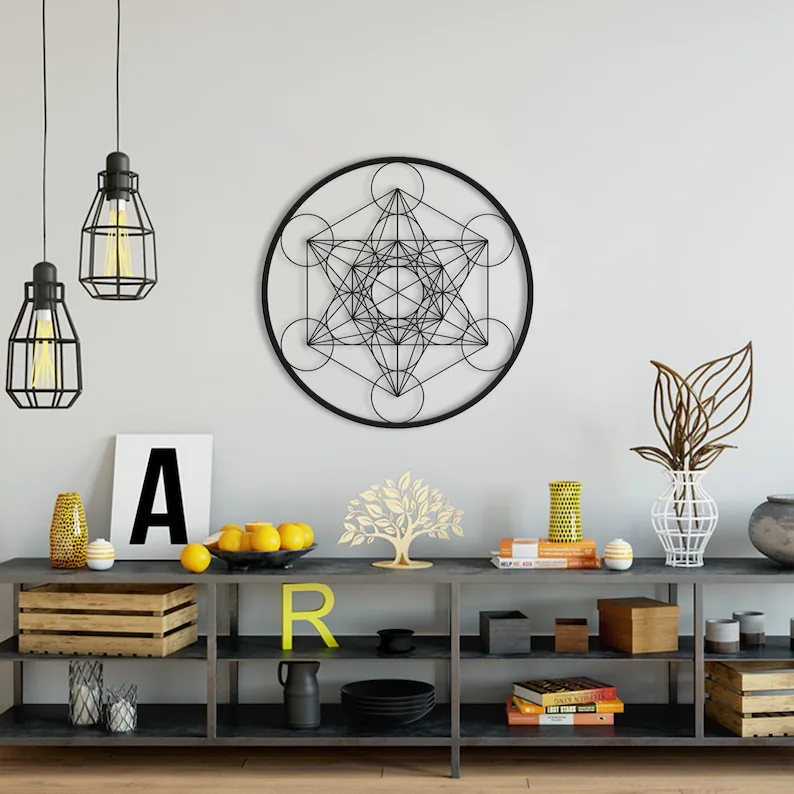
Recognized by its 13 circles and straight lines, the Metatron cube is thought to contain all the geometric shapes found in all creation. The ancients even regarded it as their map of creation, associating it with the belief that God is the geometer of the universe.
Some associate the symbol with healing and protection, since it was named after Metatron, an angel who dispels negative energies. Some also use the symbol as inspiration for personal transformation.
In many cultures, the Metatron cube is regarded as a symbol of balance and harmony since the circles are connected by lines and pulling one string will affect everything.
It’s said that the spheres represent the feminine, while the straight lines connecting them symbolize the masculine. The two components of the symbol work together to create unity.
2. Tree of Life
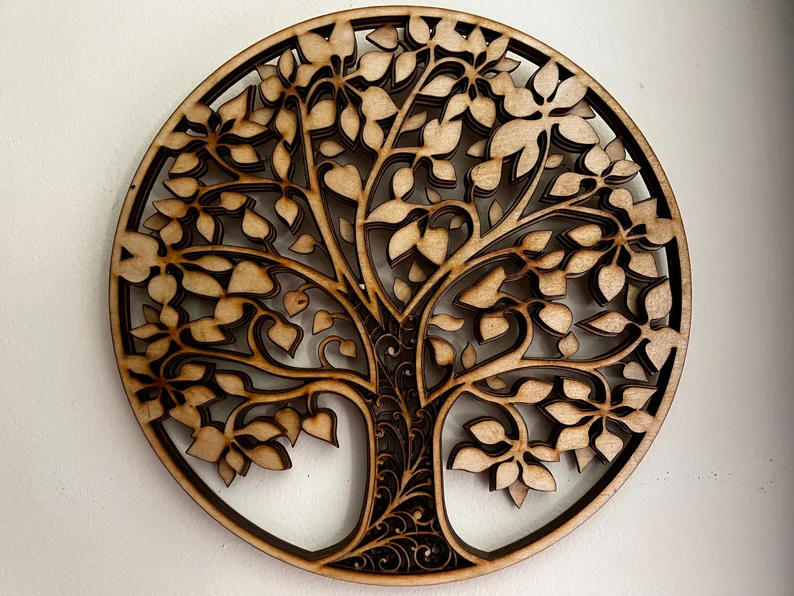
One of the most sacred symbols that seem universal across religions and cultures, the tree of life represents spiritual transformation, strength, growth and fertility. It appeared in ancient Egypt over 3,000 years ago and can be found in almost every major culture. It’s also the center of the Kabbalah, a Jewish mystical tradition. In sacred geometry, the tree of life is depicted with 10 circles, called the Sefirot, and 22 bars. The tree of life represents our unity with the universe, as well as the map of the sacred path.
3. Vesica Piscis
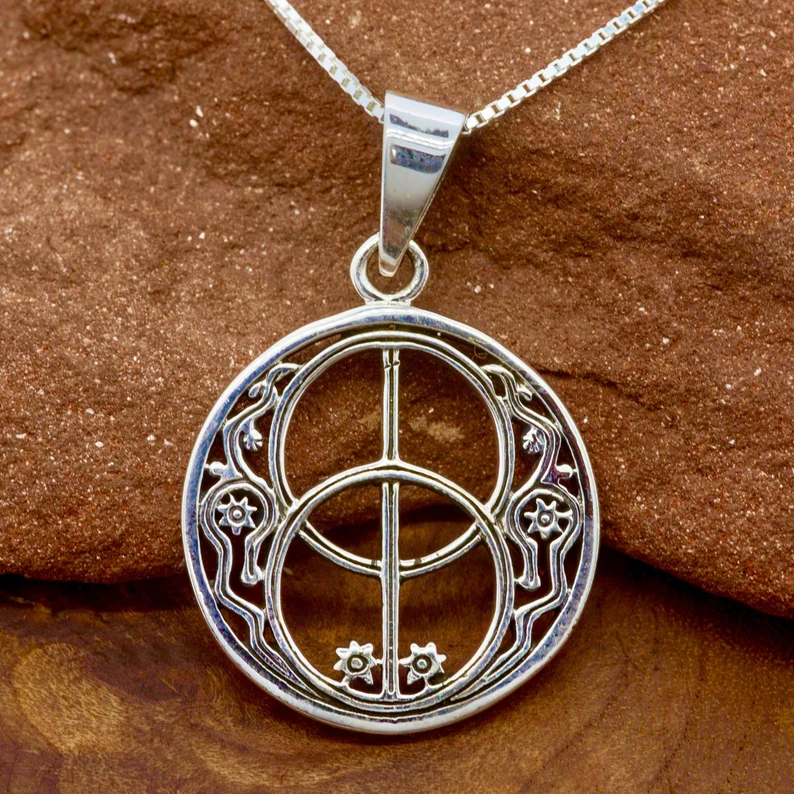
The term vesica piscis comes from Latin, meaning the bladder of a fish, and is a reference to its geometric shape. It’s recognized by the two identical circles that overlap, creating an almond-shaped center. In sacred geometry, it represents the oneness created by the union of opposites or pairs. It’s commonly seen in the architectural design of Hindu temples, Islamic arches and cathedral doorways. For Christians, the fish symbol, seen within the vesica piscis, is a symbol of Jesus of Nazareth.
4. Hamsa
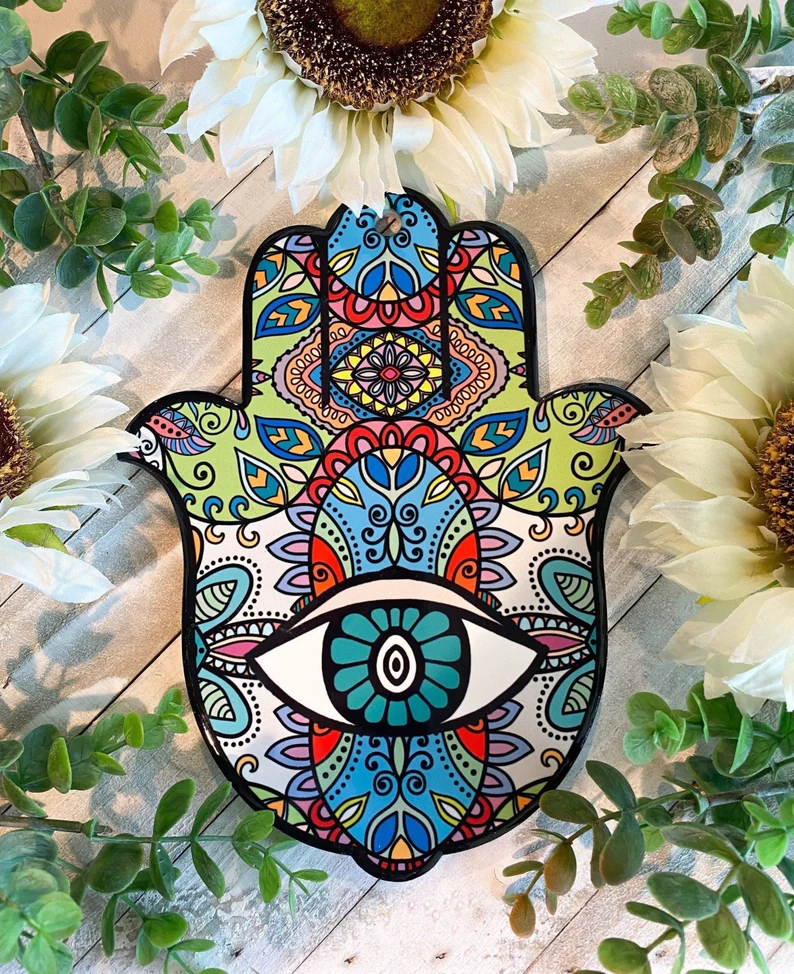
Sacred in many religions, including Jewish and Islamic traditions, the hamsa is a palm-shaped amulet worn to protect you from evil. Its name comes from the Hebrew term hamesh, meaning five, referring to the fingers on the symbol. It’s also known as the Hand of Miriam, referring to the sister of Moses and Aaron of Jewish faith, as well as the Hand of Fatima, which pertains to the daughter of Mohammed of Islamic faith. The hamsa can have different meanings, depending on which way it faces.
5. Hexagram
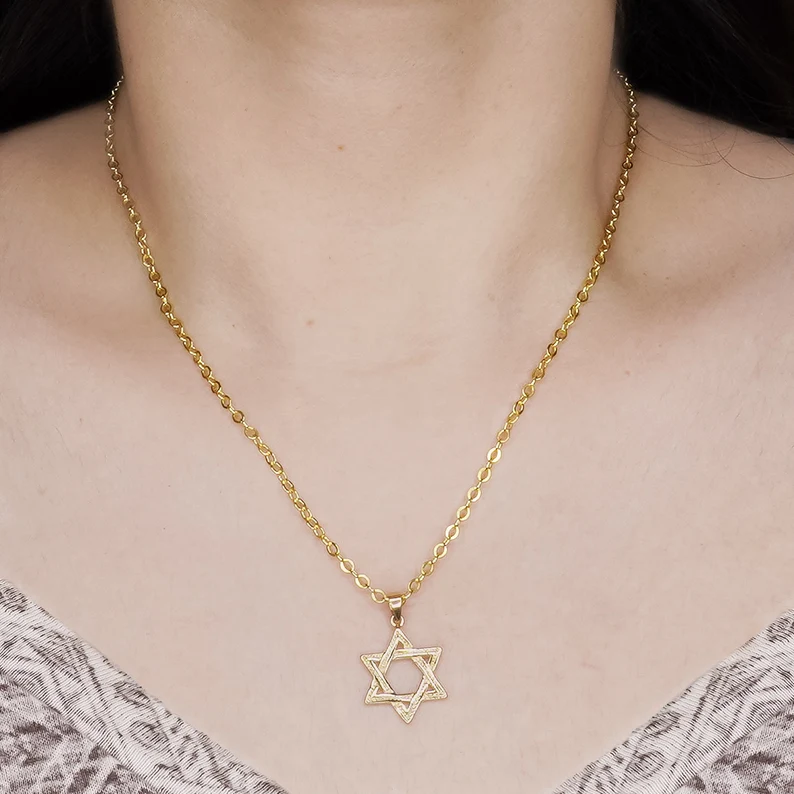
Composed of two overlapping triangles, the hexagram creates a six-pointed star, commonly referred to as the Star of David. In the Jewish faith, the two interlocking triangles symbolize the totality of the Jewish experience. The hexagram symbol was also used as decorative motifs in architecture. In Hinduism, it represents the ideal meditative state, and is associated with the heart chakra.
6. Flower of Life
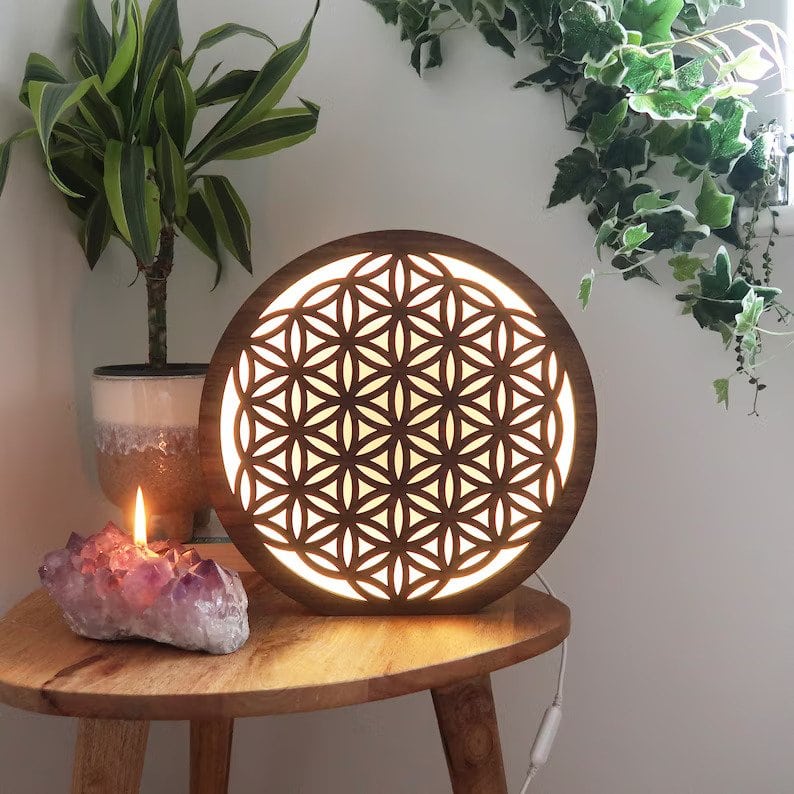
Featuring 19 evenly spaced, overlapping circles, the flower of life is said to symbolize creation, and the mathematical and logical order of the natural world. It has been found at many sacred sites around the globe, including The Temple of Osiris in Egypt and The Forbidden City in China. The flower of life also contains several other sacred geometry patterns within it, including the egg of life, seed of life and the fruit of life. Today, it’s viewed as a symbol of spiritual growth and awakening and is commonly used in meditation.
7. Sri Yantra
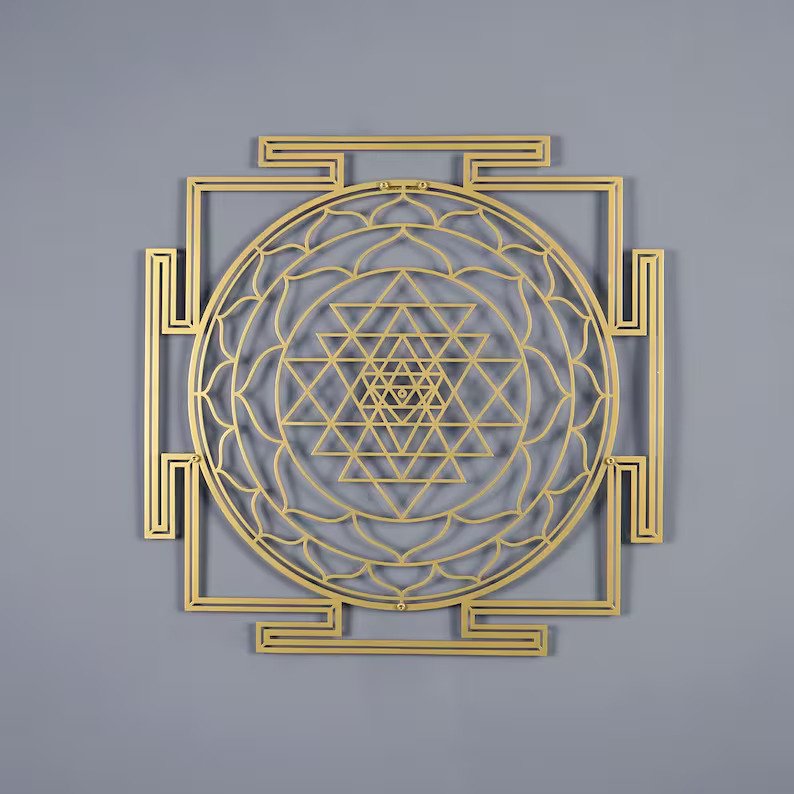
In Indian tradition, yantra is a device for spiritual advancement. The Sri Yantra symbol, featuring nine interlocking triangles, represents one’s path towards enlightenment. It’s also thought to be the symbolic form of all the gods and goddesses in Hinduism, making it a sacred symbol. It’s widely used in meditation and Hindu ceremonies.
8. Icosahedron
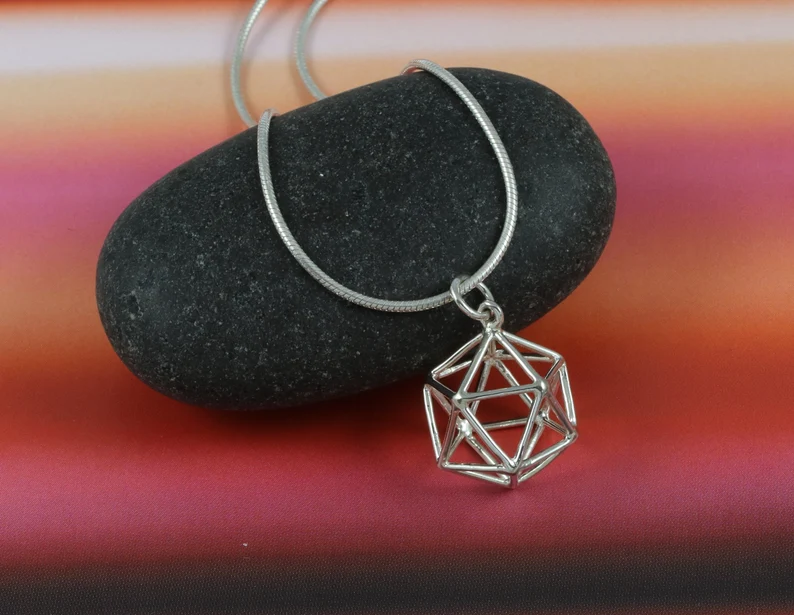
Consisting of 20 triangular sides, the icosahedron is the fifth Platonic shape that represents the water element. It’s associated with emotional and creative energies and is thought to help with healing and fertility. As the water suggests, it reminds one to go with the flow of life and trust the universe.
9. Labyrinth
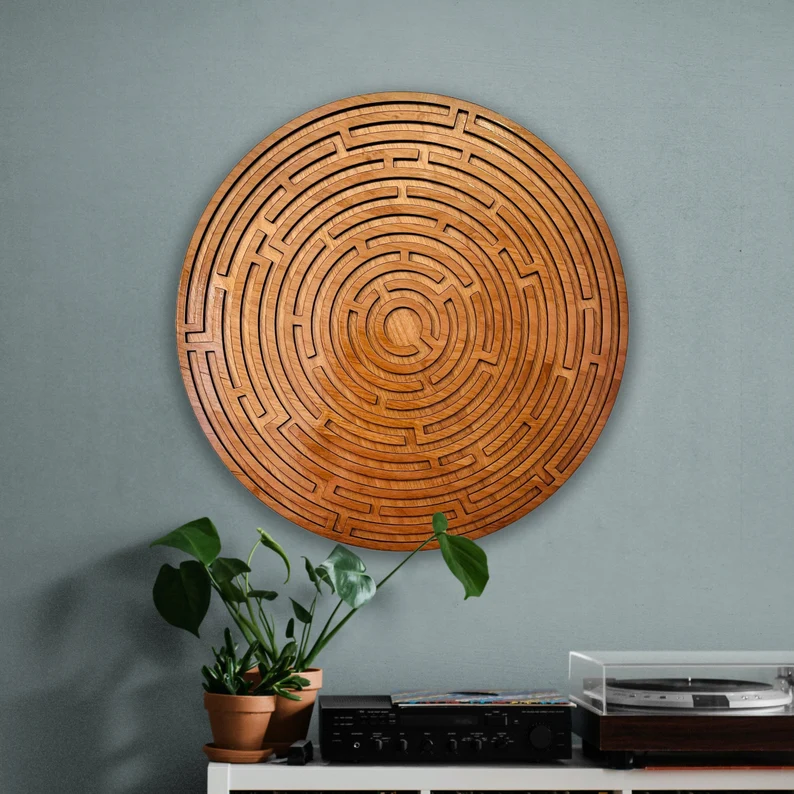
Formed in the image of the spiral, the labyrinth has long been used as a representation of journeys into the sacred. It’s said that its shape is represented in the Golden Ratio, also called the divine proportion. It’s an ancient symbol associated with wholeness and used as a tool in meditation and prayer. There are a few different versions of the labyrinth, but they all represent the same concept of a symbolic pilgrimage – a journey towards enlightenment.
Sacred Geometry in Different Cultures
The belief and practical application of sacred geometry can be found in many civilizations around the globe. Some of the geometric patterns have entered major religions, forming the blueprint of temples, tabernacles, chapels and other religious structures.
1. In Ancient Egyptian Culture
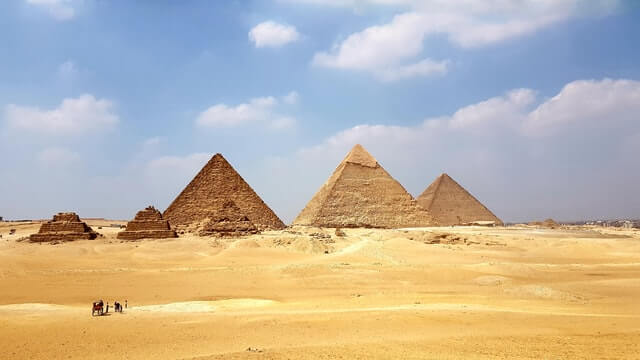
Some of the early hieroglyphic writings that have been discovered show solutions to specific problems in geometry, which were likely used by the Egyptians to build the pyramids. While many regard the formulas behind the pyramids as being pure mathematics, some speculate that these magnificent structures were built to mimic the pattern of the divine order.
Some philosophers believe that certain energies are attracted to certain shapes. By creating structures that reflect those patterns, people could experience that higher energy. It’s said that the Great Pyramid focuses intense energy in the King’s Chamber, which also reflects the concept of sacred geometry.
2. In Ancient Greek Culture
The Greek philosopher Pythagoras believed that the cosmos was structured based on mathematical ratios and moral principles. His followers even created the Harmony of the Spheres, which shows that the movement of celestial bodies can be reflected in music.
By the 6th century BCE, it was widely believed that there was a close relationship between geometrical forms and numbers. An example is the sacred symbol tetractys, which is a triangular figure composed of 10 points that are arranged in four rows.
3. In Islamic Culture
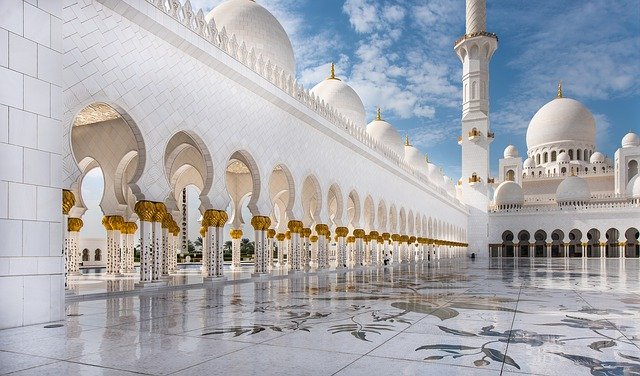
Since the 8th century, sacred geometry has played a major role in Islamic art and architecture. In fact, the interiors of Islamic palaces, towers and mosques are decorated with complex geometric shapes. Since there are no figurative representations in their religious art, Muslims use sacred geometry as a form of religious expression.
Islamic architecture often features horseshoe arches, cupola, half-dome and tunnel vault. In Islamic art, the four basic shapes and multisided polygons are common, along with arabesque or floral motifs. An excellent example is the Hagia Sophia. Originally built as a Christian basilica, the Hagia Sophia church in Istanbul, Turkey was later renovated into a mosque. It’s said that its structure reflects the religious and cosmological beliefs of Muslims blended with geometry.
4. In Italian Culture
Italian painter Leonardo da Vinci also showed interest in mathematical properties of the geometric symbol that we know today as the Flower of Life. The symbol can be seen in some of his notebooks, and it’s said that some of his hand-drawn art and paintings like Mona Lisa have the pattern as an underlying structure.
5. In Chinese Culture

The ancient Chinese built temples, palaces and other structures based on sacred geometry known as geomancy. It’s also regarded as a method of divination that interprets the patterns formed by sand, rocks and soil.
The Chinese also used sacred geometry to develop the art of placement, called feng shui. Rooted in China’s religions of Confucianism, Taoism and Buddhism, feng shui manipulates the ch’i (or the energy of the universe), to attract wealth, prosperity, health and luck.
6. In Japanese Culture
Sacred geometry also plays role in Japanese gardens, which are based on asymmetry. It’s said that asymmetry is regarded closer to nature and to the natural order. For instance, three symbolizes the earth, the heavens and the unity of humanity. This is why you’ll often see odd numbers of rocks, plants and other elements in a Zen garden. They’re often grouped together to symbolize different ideas about life. What’s more, these gardens were designed by Japanese monks as places of meditation and each element is thought to symbolize concepts about spirituality.
7. In Indian Culture
Similar to Chinese feng shui, the vastu shastra is the ancient Indian science of architecture that enhances the flow of positive energy. It incorporates geometric patterns, directional alignments and symmetry on architecture, but it’s also used in other fields such as painting, sculpture, poetry and dance.
Sacred geometry is evident in Hindu temples that were designed with the mandala as their center. The mandala is a geometric structure which consists of a square within a circle and represents the wholeness of the universe. Also, it’s regarded as a visual representation of mantras or sacred sound.
8. In Christianity
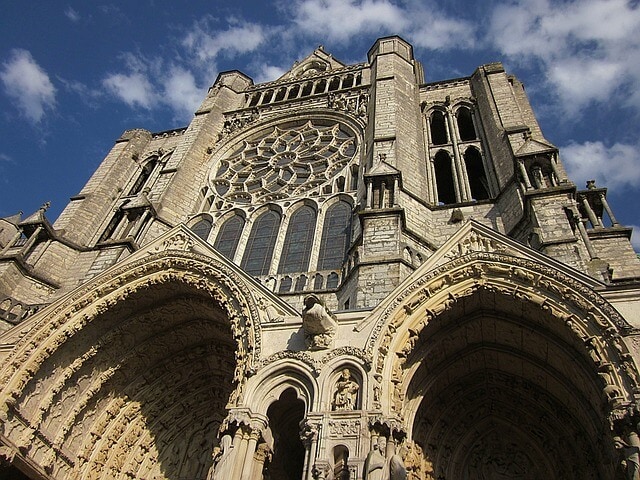
The famous Chartres Cathedral in France was based on sacred geometry, with its 12th-century labyrinth and 44 stained-glass windows. Some Christian denominations also incorporate sacred geometry and numbers in their religious beliefs, including the Holy Trinity and the Celtic cross.
Sacred Geometry in Modern Times
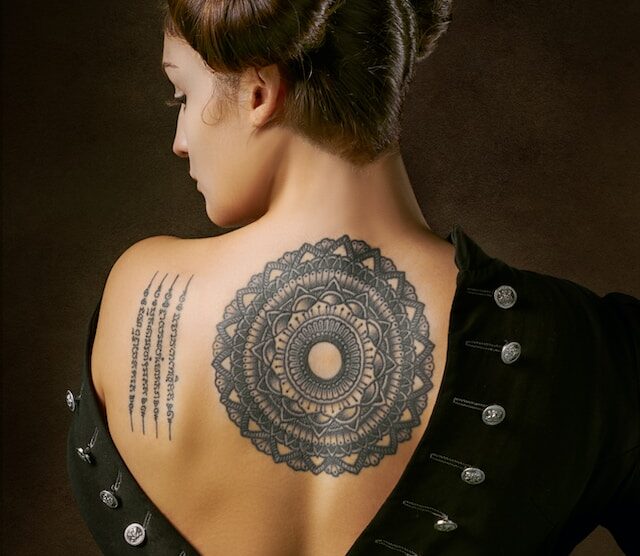
While sacred geometry remains popular in art and architecture, it’s also found in tattoos. Many people who want a spiritual but not religious body art often opt for sacred geometrical patterns to show their spirituality.
In fashion and jewelry design, sacred geometry symbols, such as the flower of life, hamsa, Sri Yantra, Metatron cube and hexagram, are common motifs. From earrings to necklace pendants and rings, you can now incorporate the principles of sacred geometry in your daily life.
It’s believed that certain types of music can affect consciousness and the states of mind, so sacred geometry is also used to produce musical harmony. In fact, the Pythagorean scale that’s based on harmonic fifths is now widely used in modern music.
In Brief
Humans love to find patterns in everything, and there are lots of them in nature. Sacred geometry is a belief that there are spiritual meanings behind nature’s geometrical patterns. It’s likely that many cultures and religions will continue to observe these perfect geometric shapes and regard them as sacred and symbolic.
Related articles
12 Ancient Roman Symbols and Their Powerful Legacy
Nordic (Viking) Symbols – A Comprehensive List
11 Popular Symbols That Changed Meaning Over Time
13 Important Druid Symbols and What They Mean
Zoroastrian Symbols: Exploring Ancient Persia’s Faith
13 Most Important Wiccan Symbols and Their Meanings
Top 12 Pagan Symbols & Their Meaning – Why They’re Popular
The Power of Triangles: What’s the Spiritual Significance of Triangle Symbols?








